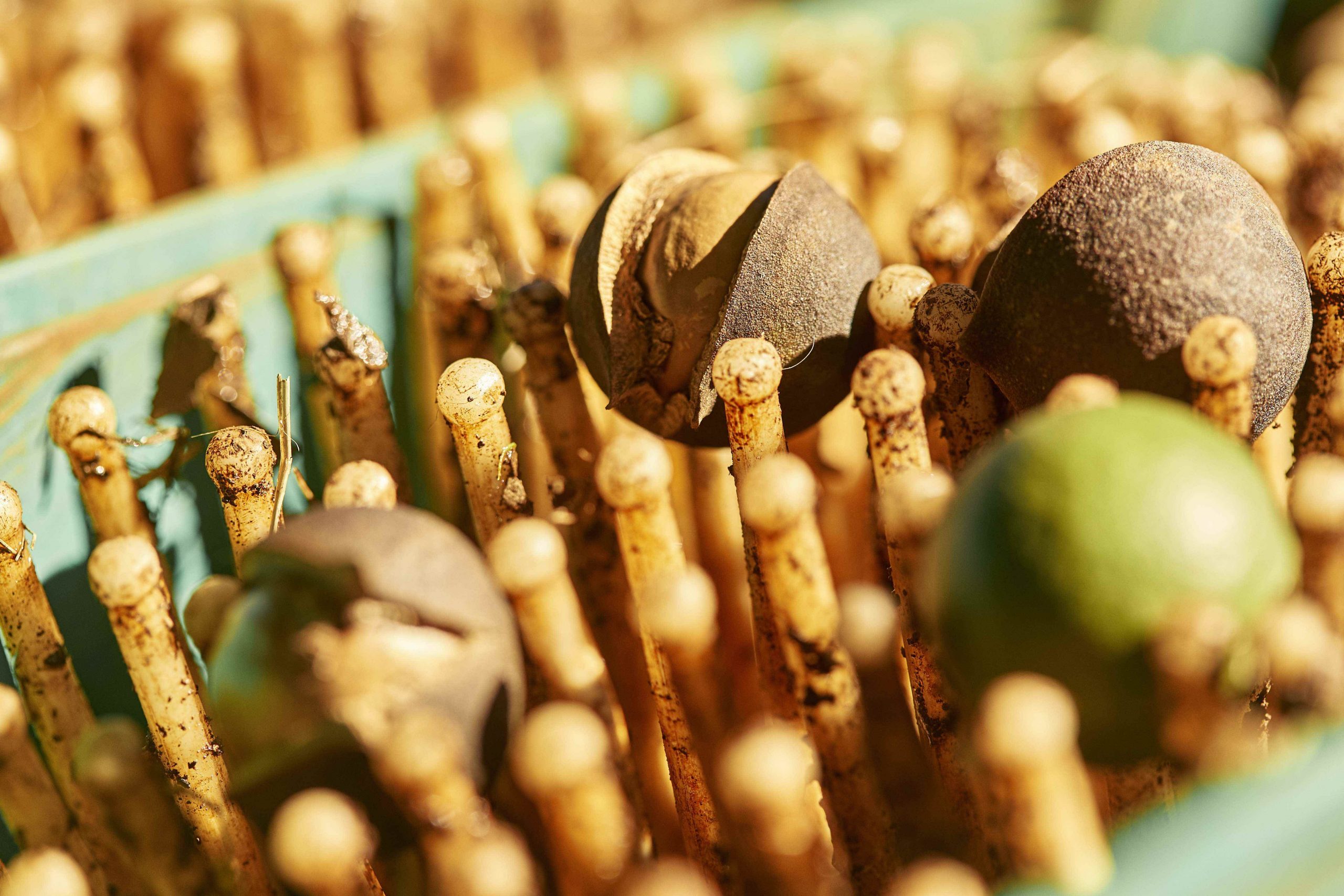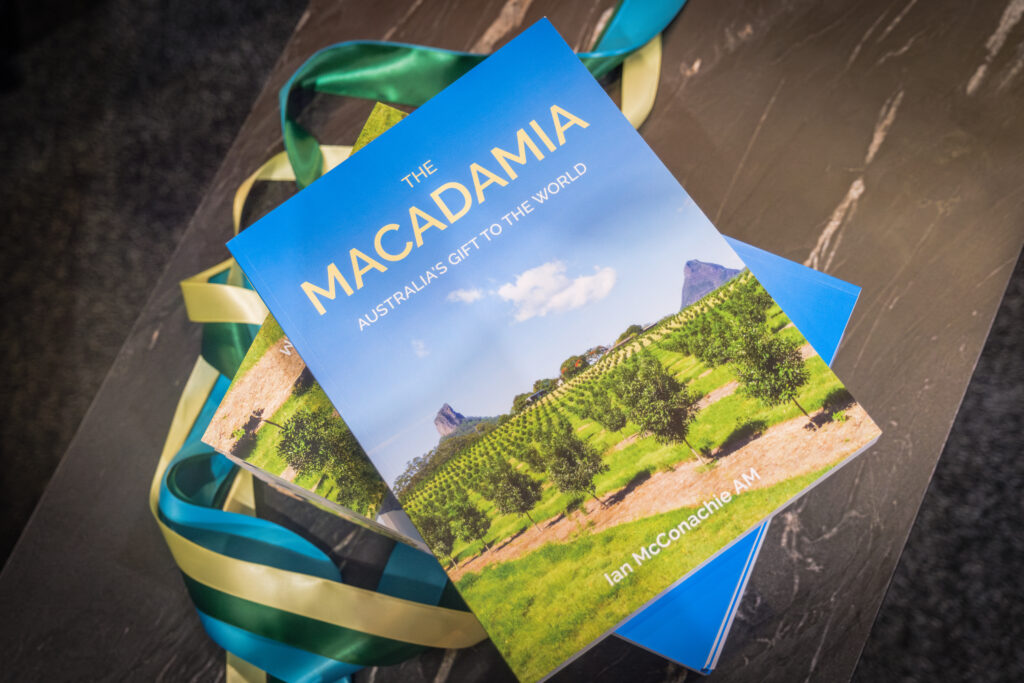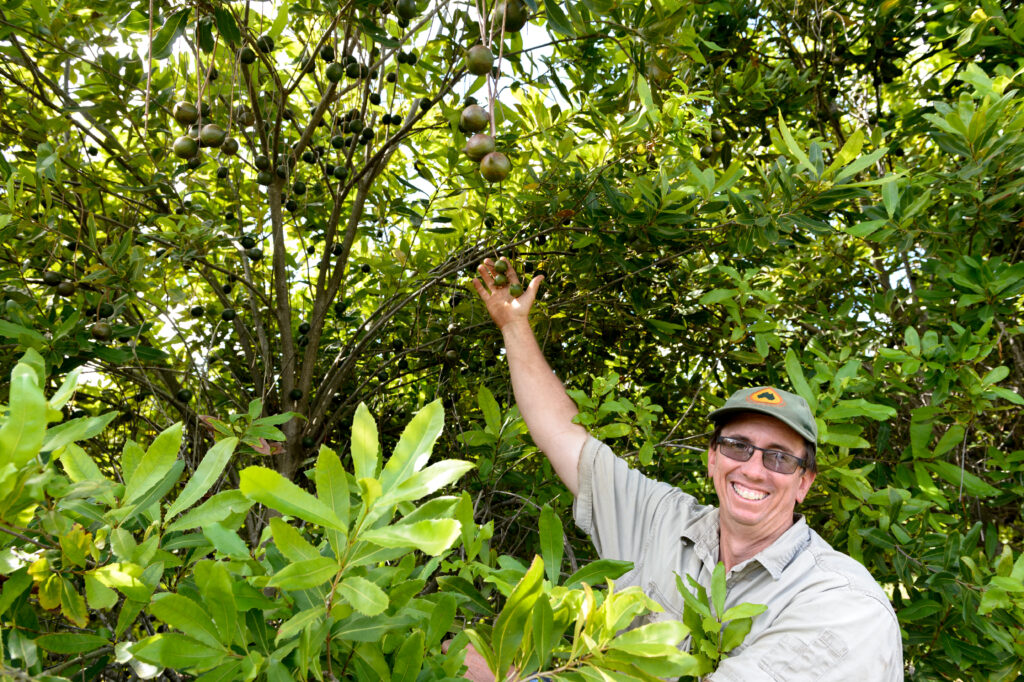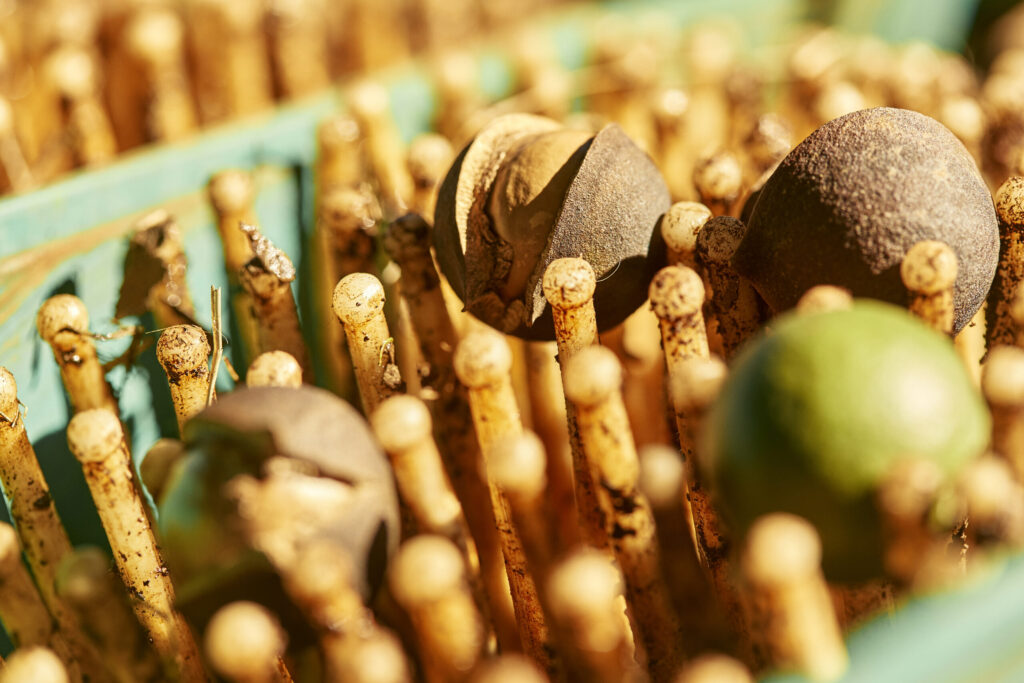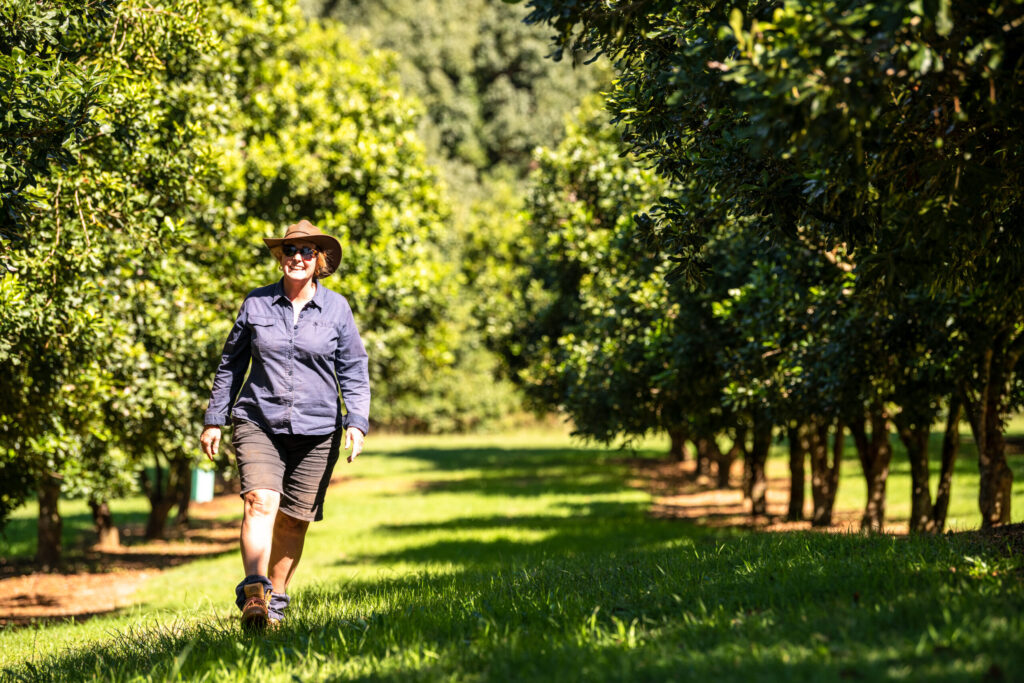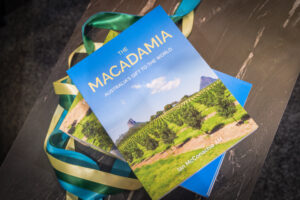Macadamias have a long history here in Australia, and many people have a nostalgic story or connection of some kind with them. In this look at the harvesting practices for this rainforest nut, we share a little of their history as well as the ongoing innovation which characterises the industry.
Like most tree nuts, macadamias are gleaned from the ground after they fall from the tree. For hundreds of thousands of years, the indigenous peoples of Australia harvested the nuts this way to use them as food, in trade and as part of cultural rituals. It’s only comparatively recently that harvesting has become a little more technical.
Hard labour
Even up until the 1970s, when the Australian macadamia industry was in its infancy, macadamias were raked up and collected by hand from the ground. This was hard labour for the huge number of itinerant workers (often over 300 in a season) that showed up to harvest each year. However, it could be rewarding for people who were good at their work.
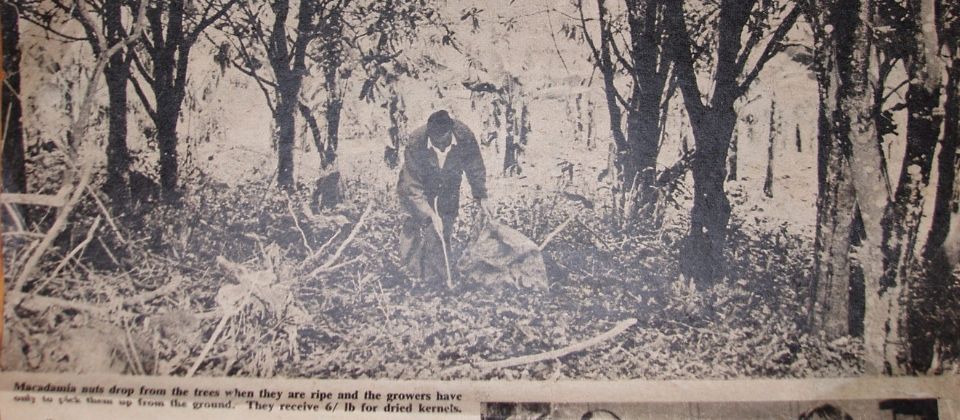
The workers were paid per kilo, and an average picker would collect around 100kg per day while a good one could collect over 300kgs. However, one resourceful collector in those early days had a reputation for collecting between 700kgs and one tonne of nuts per day by shuffling along on his hands and knees and tossing the nuts into a bucket held between his legs!
Because the cost of labour for harvesting was very high, it was a top priority for the Australian Macadamia Society when it formed in 1974 to develop a mechanical harvester.
New technology
At first almond and pecan harvesters were imported from the US. Finger wheel harvesters were the first type of mechanical harvesters. Working very similarly to the machines that collect golf balls from driving ranges, these harvesters were either pushed by hand or pulled behind a motorbike or tractor.
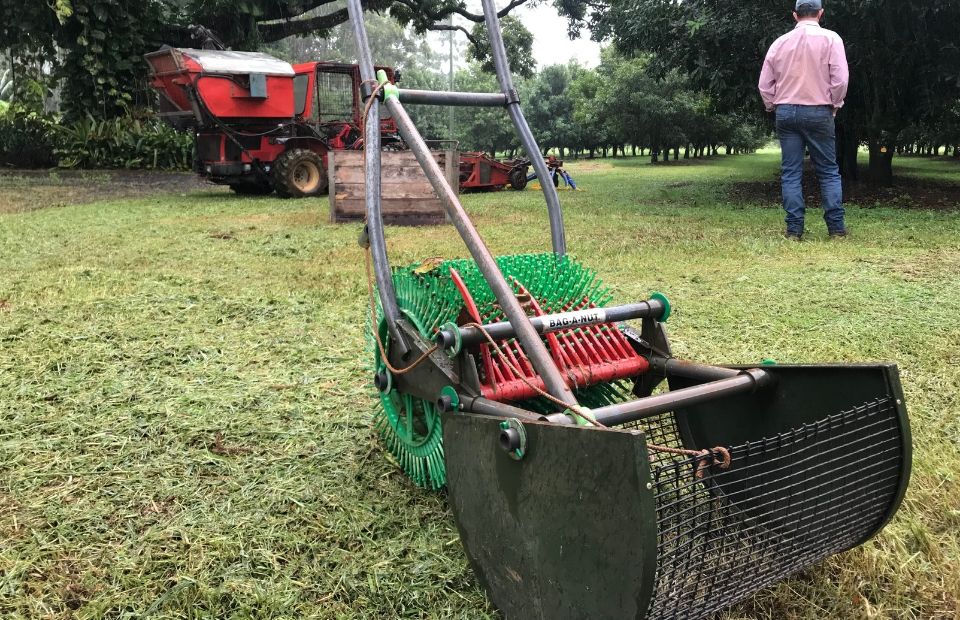
Finger wheel harvesters would only collect 80% of the nuts on the first pass so farmers had to go over the ground twice to collect everything. And because the nuts had to be blown out from under the trunks of the trees in order for the harvesters to be able to get to them, there was still manual input involved.
Although the concept behind the finger wheel harvester has essentially remained the same over the last few decades, the process has become more motorised and mechanised. Harvesters are now mounted on tractors; a far cry from their push along days.
Future harvesting
Orchards were fairly small up until the 1980s. By 1990, when large scale orchards started to bear fruit, most of the harvest had become mechanised. The industry experimented with rotary brushes, rakes and tree shakers but they didn’t pass the test of time.
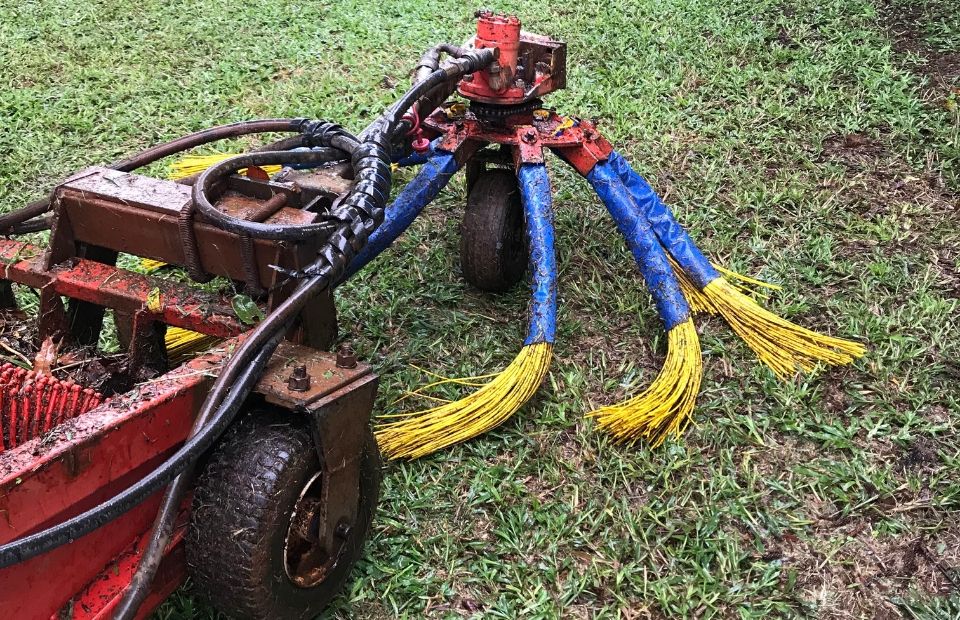
In recent years, sweeper harvesters have become popular. These harvesters are able to get right in under the canopy of the tree, avoiding the need for blowing the nuts from under the canopy.
But hand harvesting hasn’t gone away entirely. It’s still used in many other countries around the world. In Australia, nuts are often collected by hand when an orchard’s terrain is steep or when the ground is too wet for machinery to get in.
Do you have a story about the history of macadamia harvesting? Head over to our Facebook page and share it with us!
